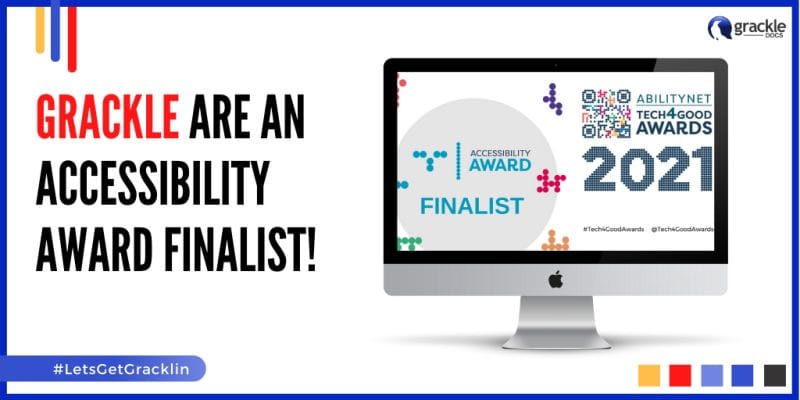Introduction
Artificial Intelligence (AI) and Machine Learning (ML) are transforming digital accessibility, enhancing the usability of digital products for individuals with disabilities. These technologies offer powerful solutions that adapt to user needs, making digital environments more inclusive. As the demand for accessible digital experiences grows, the integration of AI-driven accessibility tools and machine learning advancements in accessibility is becoming increasingly important.
Understanding AI and Machine Learning in Accessibility
AI involves creating systems that can perform tasks typically requiring human intelligence, such as visual perception, speech recognition, and decision-making. Machine learning, a subset of AI, involves training algorithms on large datasets to recognize patterns and make predictions or decisions without explicit programming for each task. These technologies are being applied to improve accessibility features in digital products, enabling more personalized and adaptive user experiences.
AI in accessibility includes technologies like image recognition, speech to text, and text to speech conversions. For example, machine learning models can be trained to recognize diverse speech patterns, including those of individuals with speech impairments, making voice-activated devices more inclusive. By continuously learning and adapting, AI and ML can provide real-time solutions, enhancing digital accessibility for users with visual, auditory, mobility, and cognitive disabilities.
AI systems rely on large amounts of data to learn and improve over time. This ability to process and analyze vast datasets allows AI to recognize patterns and make decisions that enhance user experiences. For instance, in accessibility, AI can identify common issues faced by users with disabilities and offer personalized solutions that cater to individual needs. By leveraging AI and machine learning, developers can create digital products that are not only accessible but also tailored to the unique requirements of each user.

AI-Driven Solutions for Visual Impairments
AI technologies are revolutionizing accessibility for individuals with visual impairments through image recognition and descriptive audio. Image recognition software uses AI to analyze and describe visual content, converting images into detailed, context-aware audio descriptions. This enables visually impaired users to understand and interact with visual content on websites, apps, and social media.
One prominent application is Microsoft’s Seeing AI app, which uses computer vision to describe the environment, read text, and identify objects and people. Another example is Be My Eyes, a platform that connects visually impaired users with sighted volunteers through live video calls, augmented by AI capabilities for object identification and text reading.
These AI-driven accessibility tools significantly enhance the independence and digital engagement of visually impaired users. By providing detailed and accurate descriptions of visual elements, these technologies make digital content more accessible, fostering greater inclusivity in digital environments.
In addition to mobile apps, web-based solutions are also leveraging AI to improve visual accessibility. For instance, AI-powered screen readers are becoming more advanced, providing users with real-time, context-aware descriptions of web pages. These screen readers can identify and describe images, text, and even complex data visualizations, ensuring that visually impaired users can fully engage with online content.
AI-driven technologies are also being integrated into everyday devices to assist visually impaired individuals. Smart glasses equipped with AI can recognize faces, read text, and provide real-time audio descriptions of the surroundings. These innovations are transforming the way visually impaired people interact with the world, enhancing their independence and quality of life.
Machine Learning for Enhanced Auditory Accessibility
Machine learning plays a crucial role in developing speech to text and text to speech conversion tools, enhancing auditory accessibility. These tools transcribe spoken language into text and convert text into natural speech, benefiting individuals who are deaf or hard of hearing.
Google’s Live Transcribe app exemplifies this application, using machine learning to provide real-time transcription of spoken words into text, enabling users to follow conversations and access audio content. Similarly, AI-driven hearing aids use machine learning to distinguish between different types of noise, focusing on amplifying human speech and improving auditory clarity in various environments.
These advancements in machine learning for accessibility allow users with hearing impairments to engage more fully with digital content and participate in conversations, both online and offline. By continuously learning and adapting to user needs, these tools enhance the overall digital experience, promoting inclusivity.
Another innovative application of machine learning in auditory accessibility is automatic captioning for videos and live broadcasts. AI-powered captioning systems can transcribe spoken words in real time, making video content accessible to individuals with hearing impairments. This technology is particularly beneficial in educational settings, where students can access lectures and discussions with real-time captions.
In addition to transcription, AI is improving sound classification and enhancement technologies. For instance, hearing aids equipped with AI can distinguish between different types of noise and focus on amplifying human speech, making it easier for users to understand conversations in noisy environments. These smart hearing aids can also learn from user preferences and automatically adjust settings based on the environment.
Moreover, voice recognition technology has seen significant advancements through machine learning. AI-powered voice assistants can now understand and respond to a wider range of speech patterns, including those with accents or speech impairments. This inclusivity ensures that voice-activated devices are accessible to a broader audience, providing users with auditory disabilities a more seamless and interactive digital experience.

AI Enhancements for Mobility and Cognitive Accessibility
AI is being used to create adaptive interfaces and predictive text solutions for users with mobility and cognitive disabilities, significantly enhancing digital accessibility. Voice recognition and eye-tracking technologies enable users to control devices and applications without relying on traditional input methods like keyboards and mice. These AI-driven accessibility tools provide alternative input methods, making digital interactions more accessible for users with physical disabilities.
For cognitive accessibility, AI and machine learning advancements in accessibility include natural language processing (NLP) and adaptive learning technologies. NLP can simplify complex interfaces by understanding and responding to user emotions and intent, creating more intuitive and user-friendly digital environments. Adaptive learning technologies provide personalized educational experiences, adjusting content and support based on individual learning styles and needs, benefiting users with cognitive disabilities.
For example, Apple’s Switch Control allows users with limited mobility to operate their devices using adaptive switches and customized input methods. This feature, powered by AI, can learn user preferences and provide a more personalized and efficient interaction experience. Similarly, predictive text solutions assist users with limited dexterity by reducing the effort required to type, making communication more accessible.
In educational settings, AI-driven tools can provide personalized learning experiences for students with cognitive disabilities. These tools can adapt the difficulty and type of content based on the student’s progress and needs, ensuring that each learner receives the appropriate level of support. For instance, AI-powered tutoring systems can identify areas where a student struggles and provide targeted exercises to improve their understanding.
Furthermore, AI is enhancing assistive technologies for mobility. Robotic exoskeletons, for instance, use machine learning algorithms to adapt to the user’s movements, providing support and assistance in real time. These exoskeletons can help individuals with mobility impairments to walk and perform daily activities, improving their quality of life and independence.
Challenges and Future Prospects
While AI and ML have significantly advanced digital accessibility, challenges remain, including data privacy, potential biases in AI models, and the cost of implementing these technologies. Future developments in AI and machine learning for accessibility hold the potential to further enhance digital inclusivity, with ongoing research and innovation driving continuous improvements.
Data privacy is a major concern as AI systems often rely on large amounts of personal data to function effectively. Ensuring that user data is anonymized and securely stored is essential to protect privacy. Additionally, AI models must be trained on diverse and representative datasets to avoid biases that could negatively impact accessibility for certain user groups.
The cost of developing and implementing AI-driven accessibility solutions can be high, potentially limiting their availability to individuals and organizations with limited resources. To address this, collaborations between the public and private sectors, as well as open-source initiatives, can help make these technologies more affordable and widely accessible.
Looking ahead, the integration of AI across various platforms and devices will create a seamless and cohesive accessibility experience. Users will benefit from consistent and interoperable accessibility features, whether they are using smartphones, computers, or smart home devices. Enhanced natural language processing and AI-driven assistive technologies will continue to evolve, offering new and innovative solutions for people with disabilities.
Conclusion
AI and machine learning are playing a crucial role in advancing digital accessibility, offering intelligent, adaptive, and personalized solutions that make digital environments more inclusive. By continuing to explore and adopt these technologies, we can create more accessible digital spaces, ensuring that everyone can engage with and benefit from digital content. For more information, contact a member of our team today!



